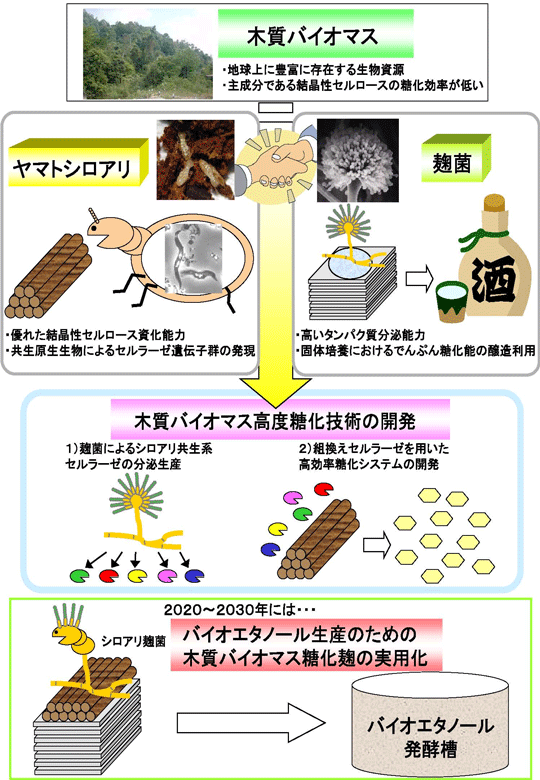Reducing the emissions of greenhouse gasses such as carbon dioxide is an increasingly important topic in global warming sources.
To reduce the emissions of greenhouse gasses such as carbon dioxide that cause global warming is an increasingly significant challenge internationally. In our country, it is required to produce a strategy for the Kyoto Protocol that came into effect last year and though the years of 2008 - 2012, cut the emission of global warming gasses such as carbon dioxide by 6% compared to 1990. One plan is through the use of recyclable resources like energy stored in plant biomass, which is considered a really promising means. However, the main constituent of plant biomass is crystalline cellulose, which is not utilizable because the cellulose is difficult to degrade. On the other hand, in the world of nature, of all the plant biomass, it is said that the termite can degrade 20 percent. Chief scientist, Dr. Toshiaki KUDO, and others at RIKEN (The Institute of Physical and Chemical Research) have published the reason why termites can utilize the plant biomass easily is because they have a variety of protist groups in their intestines that take cellulose into their phagosome and digest it into glucose through a unique digesting system. In our lab, we are collaborating with Dr. Toshiaki KUDO and others to mass-produce biomass degrading enzymes (cellulase, hemi-cellulase, etc.) from the protist groups found in the termite intestine by Aspergillus oryzae which has high protein excretion capabilities. In the future, we are considering connecting the cellulose degrading power of the termite to create a new breed of Termite Aspergillus oryzae.
